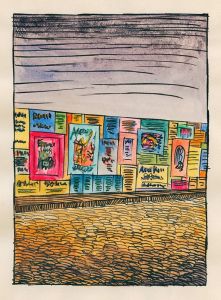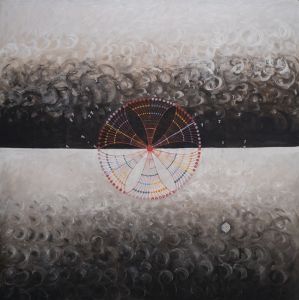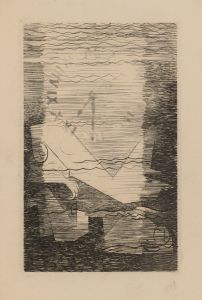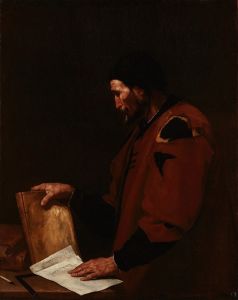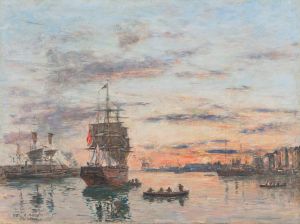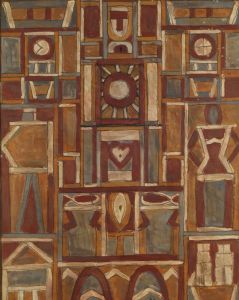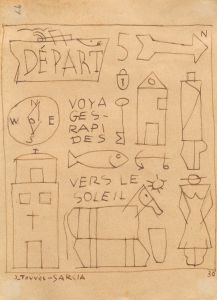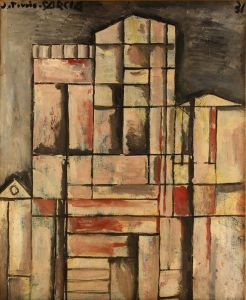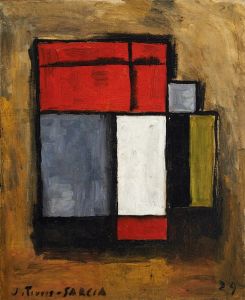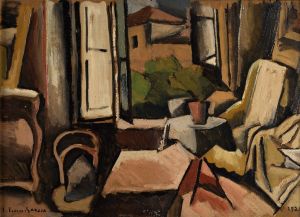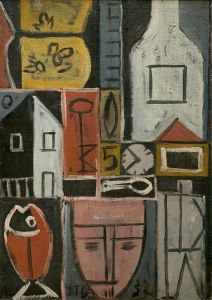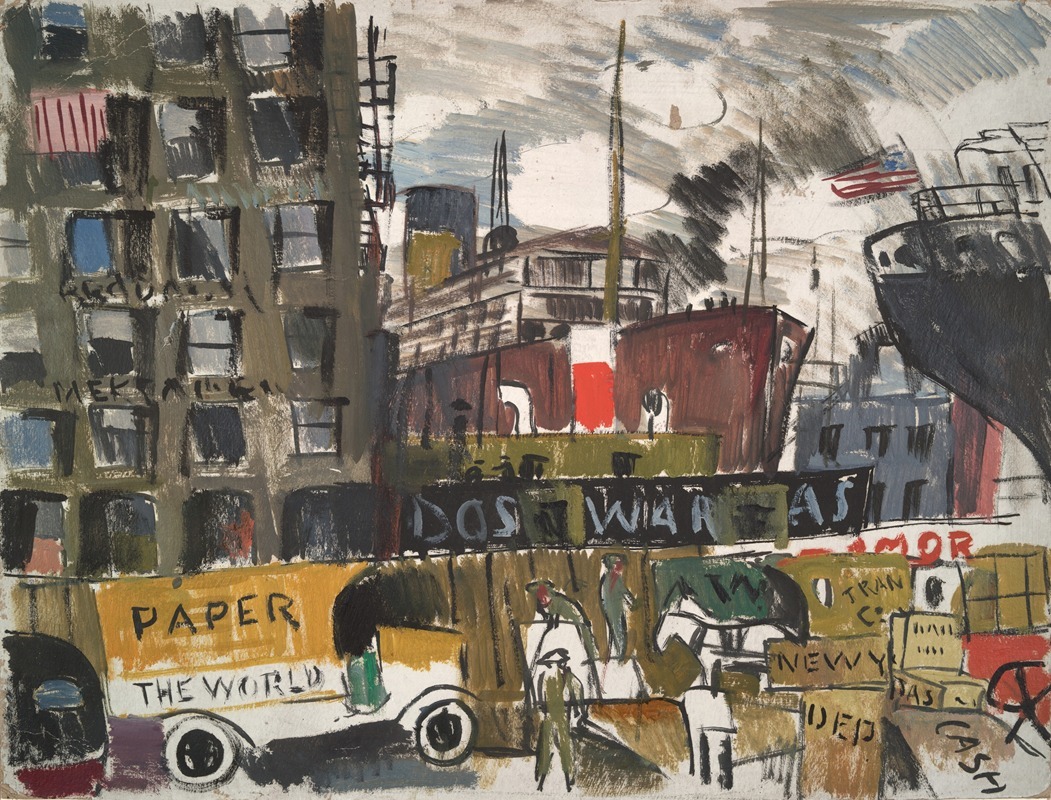
New York Docks
A hand-painted replica of Joaquín Torres-García’s masterpiece New York Docks, meticulously crafted by professional artists to capture the true essence of the original. Each piece is created with museum-quality canvas and rare mineral pigments, carefully painted by experienced artists with delicate brushstrokes and rich, layered colors to perfectly recreate the texture of the original artwork. Unlike machine-printed reproductions, this hand-painted version brings the painting to life, infused with the artist’s emotions and skill in every stroke. Whether for personal collection or home decoration, it instantly elevates the artistic atmosphere of any space.
"New York Docks" is a painting created by the Uruguayan artist Joaquín Torres-García. Born in Montevideo, Uruguay, in 1874, Torres-García is known for his significant contributions to modern art, particularly through his development of the Constructive Universalism movement. His work often reflects a blend of European modernist styles and Latin American cultural elements.
"New York Docks" was painted in 1920, during a period when Torres-García was living in New York City. This era was a transformative time for the artist, as he was exposed to the bustling urban environment and the burgeoning modernist art scene in the United States. The painting captures the industrial and maritime atmosphere of New York's waterfront, a subject that resonated with the artist's interest in modernity and urban life.
The painting is characterized by its geometric composition and the use of a muted color palette, which are hallmarks of Torres-García's style. The depiction of the docks includes simplified forms and structures, such as cranes, ships, and warehouses, rendered in a way that emphasizes their architectural and functional qualities. This approach reflects the influence of Cubism and Constructivism, movements that Torres-García encountered during his time in Europe before moving to New York.
"New York Docks" also demonstrates Torres-García's interest in the interplay between abstraction and representation. While the painting is not entirely abstract, it reduces the dockside scene to its essential shapes and forms, creating a sense of order and harmony. This technique aligns with his Constructive Universalism philosophy, which sought to create a universal visual language through the use of geometric forms and symbols.
The painting is part of a broader body of work that Torres-García produced during his New York period, which includes other urban scenes and explorations of modern life. These works collectively highlight his ability to synthesize different artistic influences and his commitment to developing a unique visual language.
"New York Docks" is held in high regard within the art community and is considered an important example of Torres-García's work during this pivotal period in his career. The painting is housed in the collection of the Museum of Modern Art (MoMA) in New York City, where it continues to be appreciated by audiences for its historical significance and artistic innovation.
In summary, "New York Docks" by Joaquín Torres-García is a notable work that encapsulates the artist's engagement with modernist principles and his ability to capture the essence of urban industrial life through a distinctive, geometric style. The painting remains a testament to Torres-García's influence on modern art and his enduring legacy as a pioneering artist.





